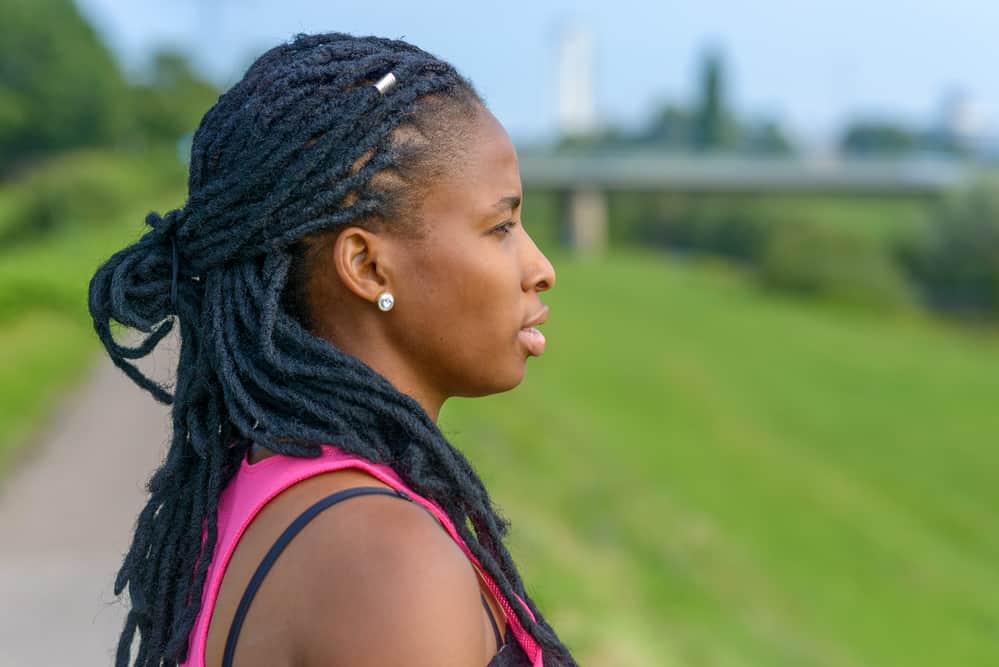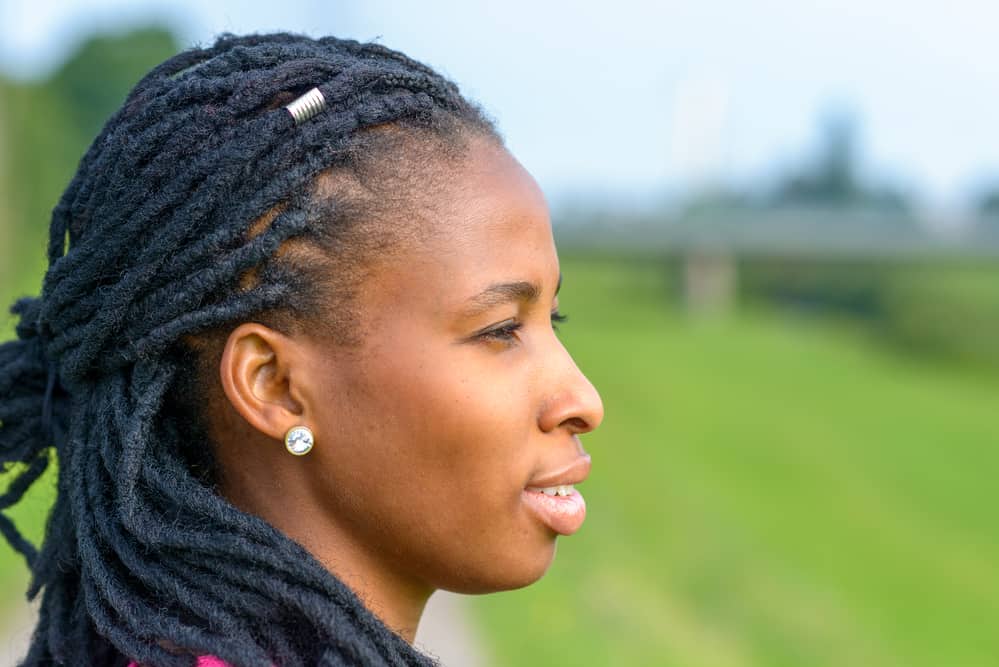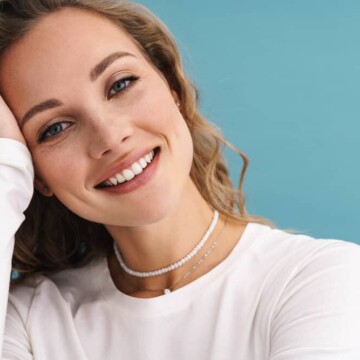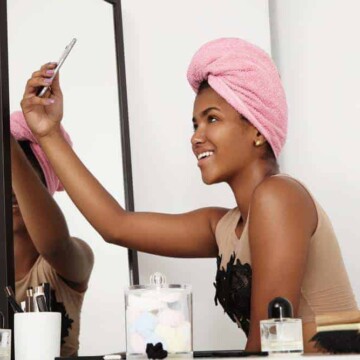
Dreadlocks are one of the most popular low-maintenance hairstyles in existence. Although, that’s no surprise, given that they are naturally beautiful and easy to maintain.
Unfortunately, at times your dreads can develop an unpleasant odor, which may be a sign of mold growth.
Moldy dreads are always a no-go, and if you think you may have this issue, you need to get rid of it fast. In this article, we’ll tell you exactly how to remove mold in dreads.
Table of Contents
Is It Mold?
Before you start trying mold removal techniques and remedies, you should ensure that mold is the issue you’re dealing with. Moldy dreads often smell like wet socks or towels that have been sitting in a corner or plastic bag.
If you notice your hair is emitting an odor like this (wet dog and sweaty gym bag are also common descriptions), you may have mold growth, also called dread rot.
Dread rot occurs when your dreads aren’t allowed to dry properly after washing your hair. The condensed hair within the dread cannot release the moisture as quickly as loose hair would.
This trapped moisture eventually leads to the growth of mold inside each dread. You won’t see the mold on your locs unless the mold is left to grow for a very long time (years) or you cut one of your dreads open.
The only other way to know that you might have mold in your locs is from the unpleasant smells coming off of your hair.

How To Get Rid of Mold in Dreads and Prevent Dread Rot
If you think you have mold in your dreadlocks, you may consider cutting them off and starting from scratch again. This isn’t necessary, though, and can be a waste of time and hair.
Rather than resorting to these drastic measures, you may want to try one of the following methods. These can remove the mold without damaging your dreads.
Apple Cider Vinegar and Baking Soda Rinse
Apple cider vinegar (ACV) is one of the most effective ways to remove mold. This is because it boasts both anti-microbial and antifungal properties. ACV helps kill the existing mold and prevents future mold and mildew growth. It even helps strengthen your hair and leaves it with a lovely shine.
You’ll need a few other ingredients for this rinse (besides the ACV), including baking soda, 2 gallons of warm water, and an optional essential oil (e.g., tea tree oil) for a lasting hair fragrance.
Follow the below steps for an effective ACV and baking soda rinse:
- After gathering your ingredients, fill a basin or sink with 2 gallons of warm water. Add half a cup of apple cider vinegar and a cup of baking soda. You may also add 15 to 30 drops of your chosen essential oil if you’d like.
- Submerge the entire length of your dreadlocks into the mixture. Let your dreads soak for 10 to 15 minutes. You can repeatedly squeeze and release your hair every so often for a deeper cleanse.
- Once the time is up, remove your dreads from the rinse mixture. You may notice that the water has a murky, dark tinge. Don’t be alarmed – this is a sign that the rinse is working.
- Dry your hair thoroughly by air drying it in the sun or using your hair dryer on the low or medium setting. If the odor is gone, you can go about your day as usual. If it persists, you can repeat this rinse as often as needed, as long as your locs don’t seem to be drying out.
Clarifying Shampoo
Clarifying shampoos are designed to remove excess oil and product buildup from your hair strands. Though mold growth isn’t quite the same issue, a clarifying shampoo can still strip it away for cleaner, fresher-smelling hair.
Removing the buildup will also help speed up your hair’s drying time in the future. Follow these steps to get the most out of the clarifying process:
- Choose your clarifying shampoo. There are several options available, but you should go for one that’s specifically formulated for dryness-prone curly hair.
- Pour some of the clarifying shampoo into a bowl or sink of warm water. Mix it well, so there are no clumps of shampoo floating around.
- Submerge your dreads into the shampoo and water mixture. Let them soak for about 15 minutes, massaging your hair during this time. This will help work the mixture into the dreads and lift out the mold.
- When the 15 minutes are up, remove your dreads from the mixture and rinse them thoroughly. You may also want to condition them since the clarifying shampoo can dry them out.

White Vinegar Soak
If you don’t have apple cider vinegar or baking soda on hand, you can use simple white vinegar to remove mold.
Here are the steps to follow for a white vinegar soak:
- Pour the white vinegar into a basin or sink. Then add some warm water. You can adjust the amount of water as needed, depending on the length of your dreads.
- Soak the entire length of your dreadlocks in the mixture for about 10 minutes. You can massage them during this time to help work the mixture into the hair.
- Remove your dreadlocks from the vinegar solution. Rinse them with warm water to remove any of the remaining mixture. Then wash your hair twice with a deep cleansing shampoo. This will get rid of any vinegar residue or odor that may be lingering in your hair.
How To Prevent Mold Growth in Locs
Having experienced the horror of moldy dreads, we’re sure you want to prevent the mold from coming back. To prevent future mold growth, there are a few tips you should know about.
Dry Your Hair Completely
Since the leading cause of mold growth is prolonged dampness, you need to keep your dreads dry as often as possible – especially after washing them. You can do this in a few different ways.
The first option is to air dry your hair. You can do so indoors or out in the sun. Make sure that your hair is 100% completely dry before styling or covering it up.
You also shouldn’t wash your hair before bed, as you could end up with wet spots by morning depending on how you sleep on your hair.
If you don’t have time to let your hair dry naturally, you can blow dry it using low to medium heat.

Don’t Use Waxes
Wax traps moisture within your dreads, preventing them from drying properly. Frequent use leads to mold growth over time.
Wax also attracts unwanted debris, like dust, dirt, and lint. These are all difficult to remove from your dreadlocks, so avoiding wax also keeps them cleaner and easier to manage.
If you want to keep flyaways to a minimum, a water-based gel is a much better bet.
Proper Loc Cleansing
Regular hair washing is another way to prevent mold growth. Dreadlocks should be washed every two weeks or so to keep them clean and healthy.
Using a sulfate-free, residue-free shampoo is best, as it helps to retain your hair’s moisture levels. You can also do a vinegar rinse once or twice a year to keep product buildup and mold away.
- Why Do Dreadlocks Look Dirty?
- How to Detox Dreads at Home
- How To Remove Bad Smell From Dreadlocks
- How to Make Dreadlocks
Though removing mold from your hair can be tricky, it’s possible with the correct technique. Rather than covering the odor with scented sprays or chopping your locs off, try one of the methods mentioned in this article.
Once you’ve removed the mold, keep your locs clean and fully dry so the mold won’t return. You’ve got all the information you need to get mold-free locs today! Good luck!




